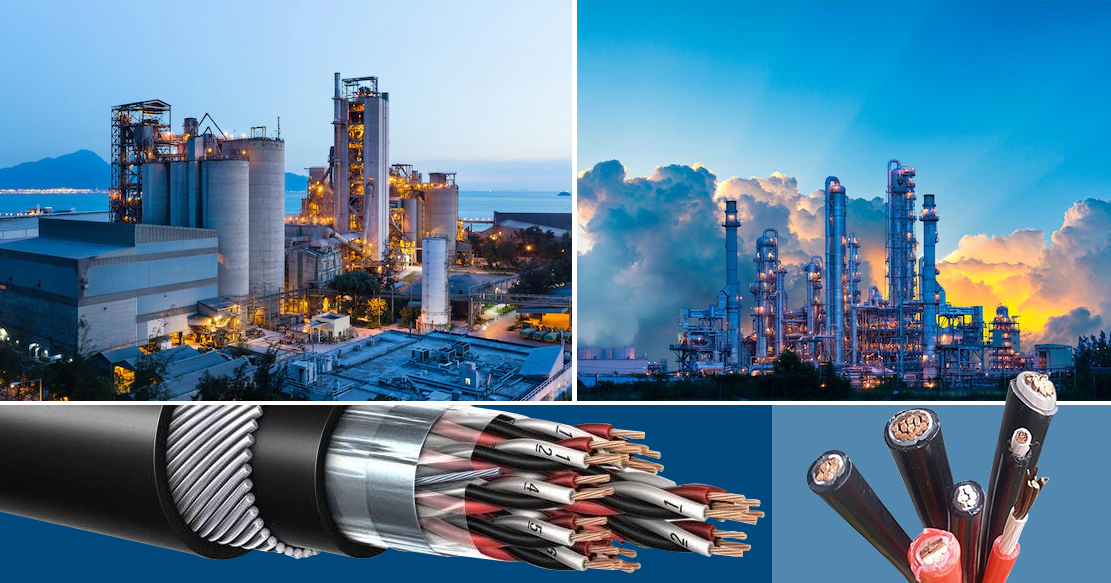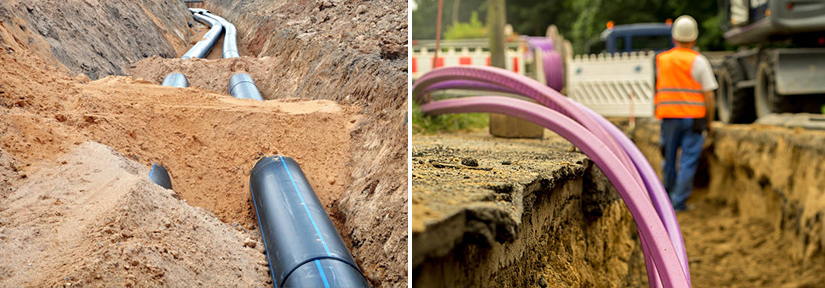
The Need of Cathode Protection Cables
Wires and Cables application spans from extreme-hot environments to extremely cold, humid, submarine, and direct burial. They must perform in these adverse conditions irrespective of exposure to harmful chemicals, water, high temperature, high pressure, and other harmful intruders. Exposure to these extreme surroundings causes corrosion in wires and cables, demanding cathode protection.
Cathode protection in cables reduces corrosion damage and increases their resistance to chemicals, moisture, high temperature, high pressure, abrasion, and other harmful surrounding conditions. Cathode protection cables are insulated and jacketed using fluoropolymers like Hayar, Kynar, and High molecular weight polyethylene (HMWPE) to withstand corrosion and increase their performance.
What is Cathodic Protection

Cathodic protection is a technique for mitigating corrosion damage to a metal surface. The system controls corrosion by making the metal surface the cathode of an electrochemical cell. A simple method connects the metal to get protected with the sacrificial metal, i.e., easily corroded metal. The Sacrificial metal acts as the anode and gets corroded in place of the protected metal. The two basic types of cathodic protection are
 Galvanic
Galvanic
Galvanic protection consists of protective zinc coating to the steel metal to prevent rust. Here, Zinc corrodes instead of encapsulated steel. The sacrificial anode continues to degrade over time and has a limited life span.
 Impressed Current Cathodic Protection
Impressed Current Cathodic Protection
The impressed current cathodic protection system consists of anodes connected to a power source, providing a perpetual source of electrical flow. The sacrificial anode uses a metal more active than the base metal to sacrifice ions and have a stronger electrochemical potential, providing much longer protection. Cathodic protection helps protect pipelines, water treatment plants, above and underwater storage tanks, ship and boat hulls, offshore production platforms, reinforcement bars, and more.
The Need of Cathode Protection in Cables
Wire and cable manufacturers need to give cathode protection to wires and cables to ensure their performance. Cables cathode protection ensures copper wire does not break or give fault performance due to corrosion. Factors that raise the need for cathode protection in cables are listed below.
Work Against Precipitation

Wires and cables high exposure to rain, sleet, snow, or hail leads to immense damage. Cathodic protection can absorb moisture and prevent moisture from affecting the cable. Cathode protection with outdoor wires and cables for damp and indoor protection helps save them against precipitation.
 Protection Against Extreme Temperature
Protection Against Extreme Temperature
Cables have to withstand extremely-hot and cold environments to perform. The wires and cables should provide the necessary voltage for an application in extreme temperatures. Cathodic protection of wires and cables supports them to perform at extreme temperatures for the required application.
 Protection in High-Pressure Situations
Protection in High-Pressure Situations
Cathodic protection provides wires and cables the necessary protection required in high-pressure situations. It helps avoid any physical damage and shape deformation due to high pressure in tight spaces, underground, and more.
 Barrier to Intruders
Barrier to Intruders
Cables and wires get used anywhere that makes them come in contact with intruders, such as animals, acidic materials, abnormal lightning, galvanization, and more. And Cathode protection serves as a barrier to these intruders.
Type of Cathode Protection Cables and Their Application

Cathode protection cable consists of a copper conductor insulated with a plastic compound. The plastic-compound is highly corrosion and abrasion-resistant. These cables have to jacket High molecular weight polyethylene (HMWPE), Halar (ECTFE), or Kynar (PVDF). Halar and Kynar are two different types of fluoropolymers. These fluoropolymers are thick and flexible, making the cable easy to use.
Cathodic protection cable is a stranded construction, direct burial rated, and suitable for 600-volt usage. The list of cathode protection cables manufactured and their application are as follows.
 High Molecular Weight Polyethylene (HMW-PE) Cathodic Protection Cables
High Molecular Weight Polyethylene (HMW-PE) Cathodic Protection Cables
HMW-PE Cathode protection cables have a single conductor with stranded copper. The stranded copper conforms to ASTM specification B-8. These cables have HMW-PE insulation conforming to ASTM D-1248, Type 1, Class-A, Category-5, Grade E4 & E5. The polyethylene insulation is durable, abrasion resistant and flexible. It has temperature and chemical limitations. The tensile strength of the cable confirms to J1 and J3. Application: These cables gets used for submerged installations in water tanks, offshore structures, and other similar applications. They are in application as anode lead wires, header cables, structure connections, lead tests, and more.
 Halar/HMWPE Cable
Halar/HMWPE Cable
Halar/HMWPE cables have cathode protection with primary Halar insulation and HMWPE jacketing. The stranded bare copper conductor confirms ASTM specification B-8. Insulation of a homogeneous wall of natural ECTFE fluoropolymer (Halar) gets extruded over the conductor. It provides chemical resistance properties. HMWPE jacket insulation conforms to ASTM-D-1248, Type 1, Class A, Category 5, Grades E4 and E5. The jacketing increases abrasion resistance. Application: Halar/HMWPE cables are applicable as direct burial cables for deep-well installations where resistance to chlorine gas is required.
 Kynar/HMWPE Cable
Kynar/HMWPE Cable
These cathodic protection cables have primary Kynar insulation and HMW (High Molecular Weight) Polyethylene Jacketing. The stranded bare copper conductor confirms ASTM specification B-8 and has a natural wall of PVDF fluoropolymer extruded over the conductor. An Insulation of high molecular weight polyethylene conforms to ASTM-D-1248, Type 1, Class A, Category 5, Grades E4 and E5.
Application: Kynar/HMWPE cables are in application as direct earth burial cables, DC lead, and cathodic protection cables for use in deep anode ground bed installations. They can withstand corrosive gases.
Gloster Cathode Protection Cables: A solution to Wire and Cable Corrosion
Gloster Cables is a well-known name in the wire and cable domain, as the industry has shown its presence with a wide range of wire and cable for more than 20 years. Gloster has included cathode protection cables in its product portfolio, considering the need for corrosion resistance among wires and cables. Gloster’s cathode protection cables include the list of HALAR Cables, HMWPE Cathodic protection cables, Kynar Cathodic protection cables, etc. These cables are suitable for various applications, reducing corrosion against chemicals, moisture, high-pressure, and more. Gloster follows a stringent quality and testing policy to ensure the performance of its Cathode protection cables against metal and wire corrosion.
CONTACT US